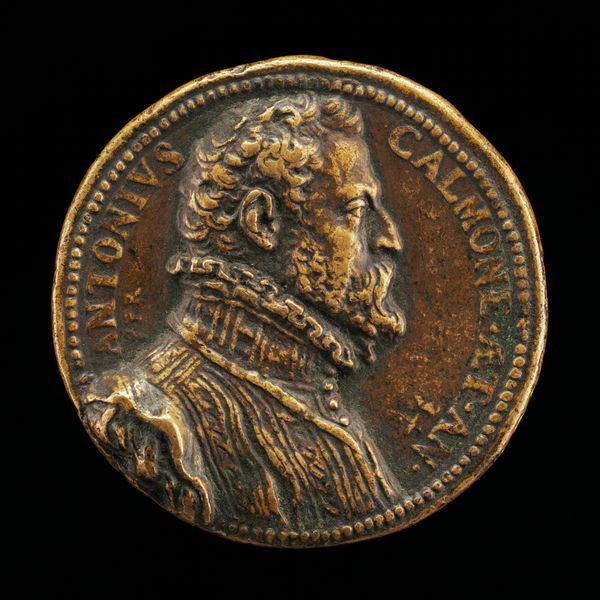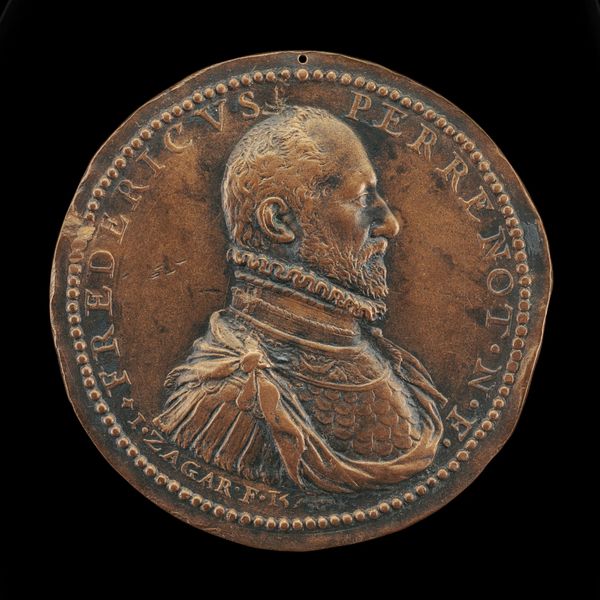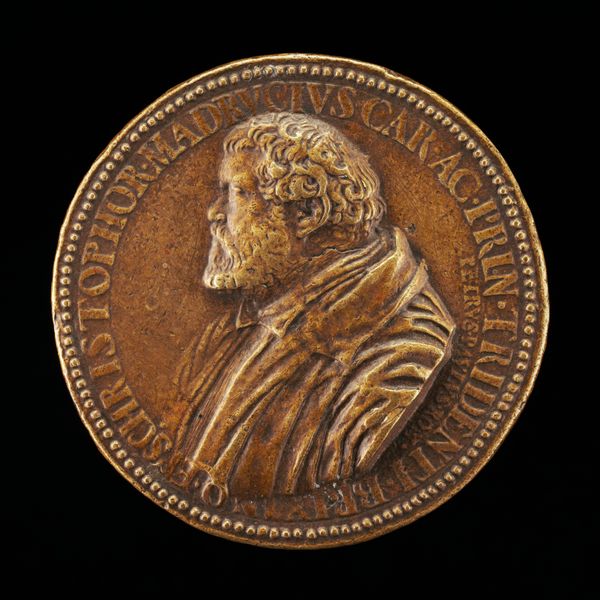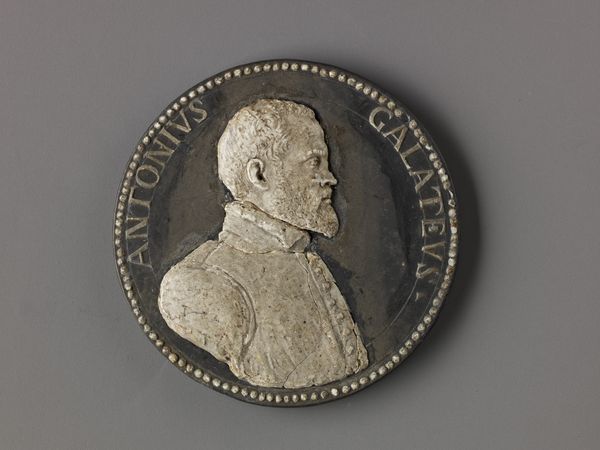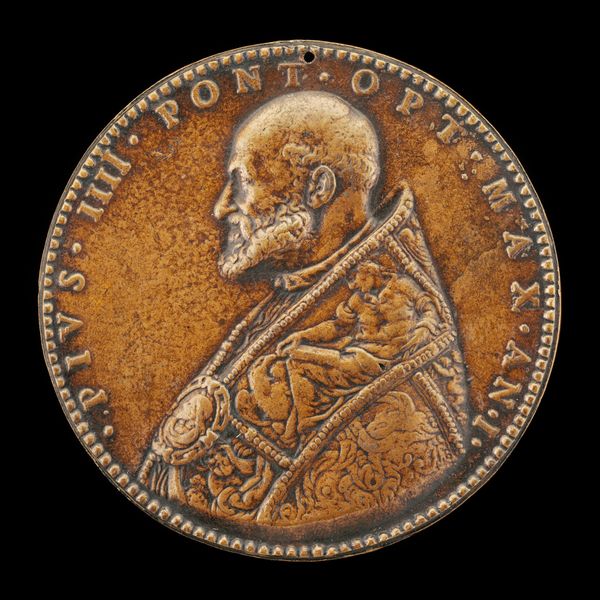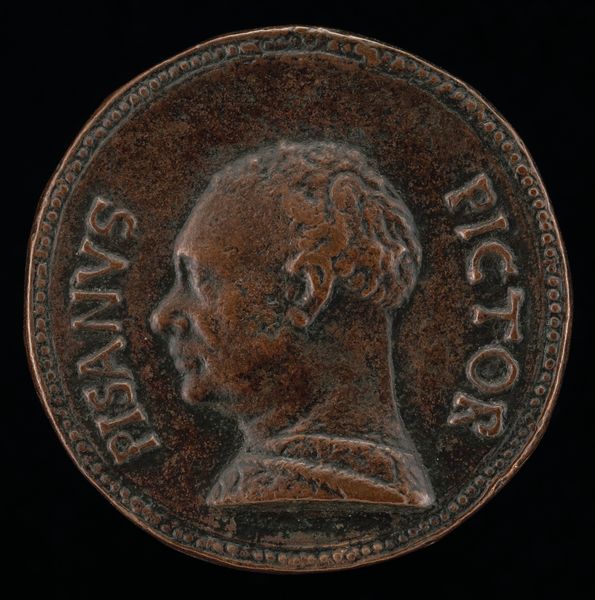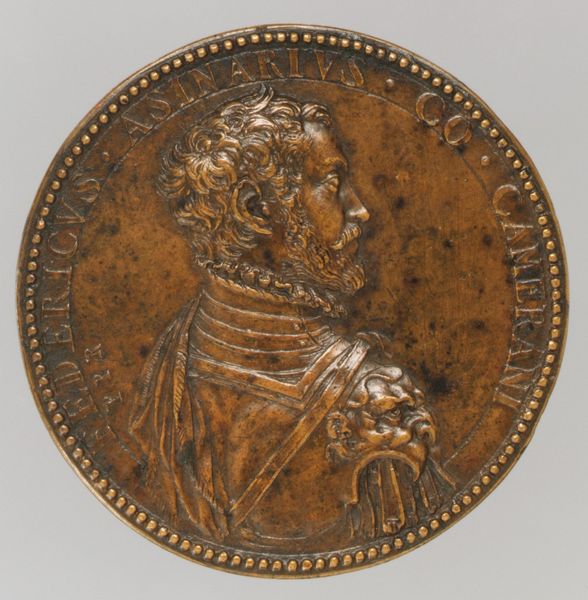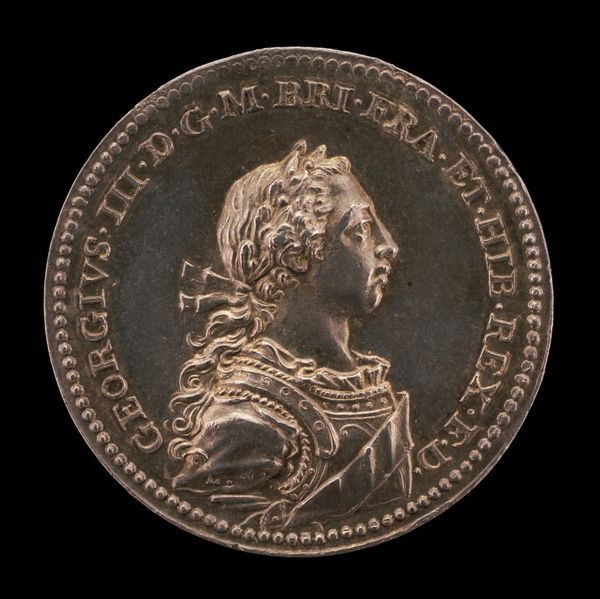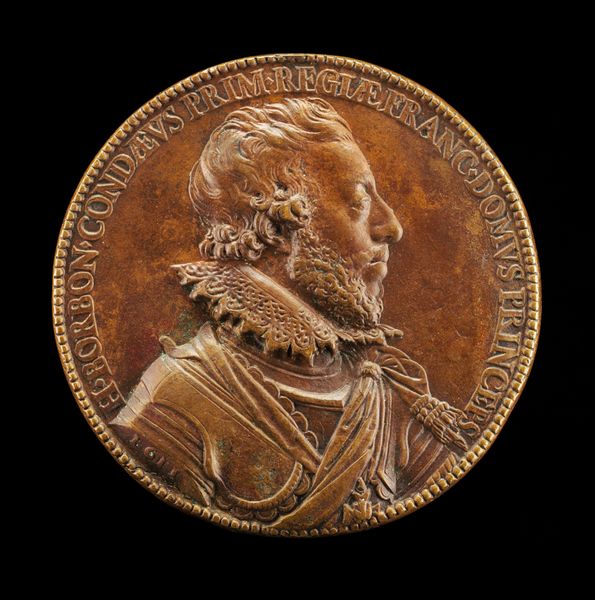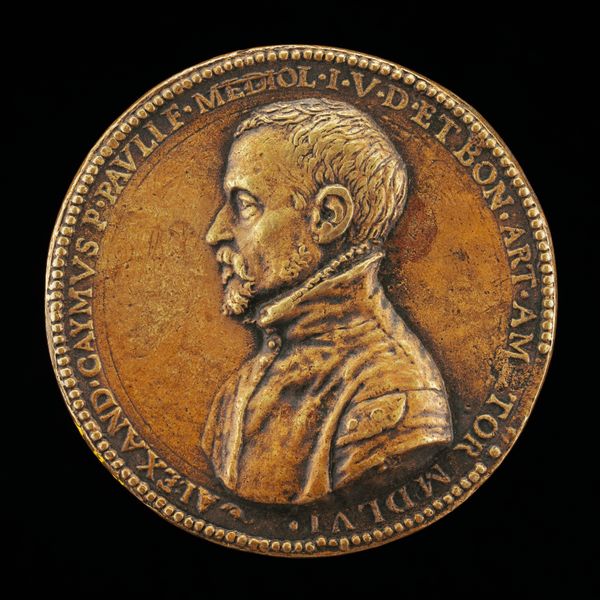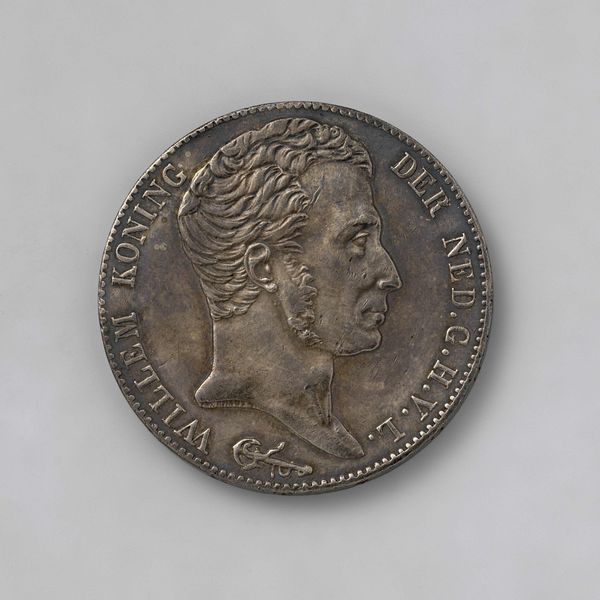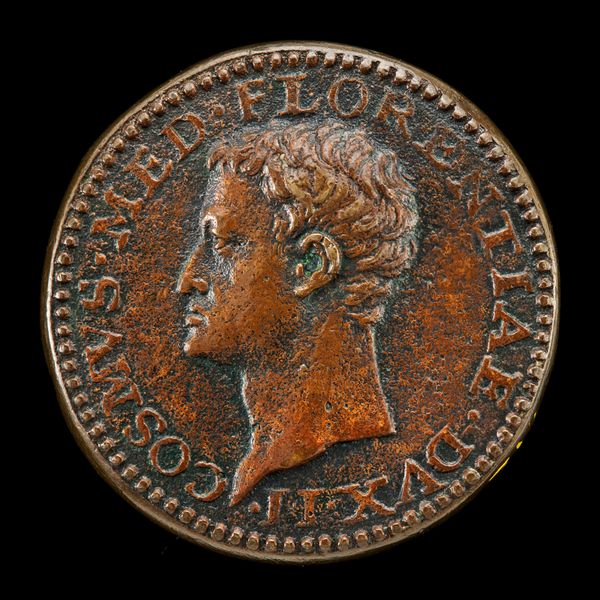![Fernando Francesco II d'Avalos, c. 1530-1571, Marquess of Pescara [obverse] by Annibale Fontana](/_next/image?url=https%3A%2F%2Fd2w8kbdekdi1gv.cloudfront.net%2FeyJidWNrZXQiOiAiYXJ0ZXJhLWltYWdlcy1idWNrZXQiLCAia2V5IjogImFydHdvcmtzLzY4OTIwNjQ4LWU5OGYtNDRlMi1hYzE3LTMyODE1NWFkZmUyOS82ODkyMDY0OC1lOThmLTQ0ZTItYWMxNy0zMjgxNTVhZGZlMjlfZnVsbC5qcGciLCAiZWRpdHMiOiB7InJlc2l6ZSI6IHsid2lkdGgiOiAxOTIwLCAiaGVpZ2h0IjogMTkyMCwgImZpdCI6ICJpbnNpZGUifX19&w=3840&q=75)
Fernando Francesco II d'Avalos, c. 1530-1571, Marquess of Pescara [obverse] c. 1562
0:00
0:00
carving, relief, bronze, sculpture
#
portrait
#
medal
#
carving
#
sculpture
#
relief
#
bronze
#
mannerism
#
sculpture
#
carved
Dimensions: overall (diameter): 7.2 cm (2 13/16 in.) gross weight: 125.12 gr (0.276 lb.) axis: 12:00
Copyright: National Gallery of Art: CC0 1.0
Curator: This is a bronze portrait medal created around 1562 by Annibale Fontana, depicting Fernando Francesco II d'Avalos, Marquess of Pescara. Editor: My initial reaction is one of severity. The bronze and its greenish patina contribute to the commanding presence of the Marquess, evoking a sense of power and aristocratic stoicism, wouldn't you agree? Curator: Certainly. The relief is incredibly detailed. Look at the textures rendered—the intricacy of his armor, the crispness of the ruff, and the defined curls of his hair and beard. Fontana’s mastery lies in creating depth and character within such a limited space. It adheres strictly to Mannerist ideals of artistic refinement. Editor: I agree about the artist’s skill, but I find it also interesting to consider d'Avalos’ historical role in relation to how he's been rendered in this work. This medal was created decades after his death and is commemorative. I mean, here's a figure of power, a nobleman who fought in service of Charles V during a time of profound social and political upheaval across Europe, carefully memorialized here. What values did it subtly seek to inscribe upon his legacy? Curator: I understand your point; one can investigate the iconography for additional cultural context. However, one must still appreciate the artistic techniques utilized here to communicate and achieve a certain effect. For instance, observe how the direction of his gaze and posture create a sense of noble bearing and dignity through formal, rather than political, means. Editor: Agreed, his portrayal presents him as an unassailable icon, but icons often serve a purpose beyond mere aesthetic admiration. Understanding that medals like these circulated amongst elites allows us insight into the creation of courtly identities, the performance of nobility, and the negotiation of power through visual culture in the 16th century. D'Avalos isn’t merely a face—he is part of a system. Curator: Indeed, and regardless of interpretation, Fontana’s craftsmanship ensures this medal functions as a striking piece, capable of captivating viewers centuries later. The elegant interplay between line, form, and texture generates a compelling aesthetic experience in its own right. Editor: Precisely. The medal itself encapsulates complex tensions between aesthetics and agency, surface and substance. Understanding both makes the encounter far more engaging.
Comments
No comments
Be the first to comment and join the conversation on the ultimate creative platform.
